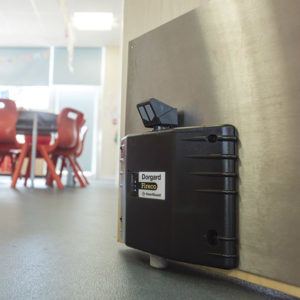Friday 12th August 2011
After the recent BBC investigation about London care homes not meeting fire safety regulations there has been an important court ruling that will hopefully change the behavior of care home owners and increase the safety of the residents.
The issue regarding resident bedroom doors, which must be fitted with self closing fire doors, and the risk of these fire doors being wedged open in an illegal manner was addressed. Fire doors are generally heavy and when fitted with a self closing device very hard for an elderly person to open. In the case of care homes fitting bedroom doors with these devices will restrict the mobility and independence of residents. The fear was that care home owners will then wedge the doors open to allow residents to freely move in and out of their bedrooms. This practice is illegal and the judicial ruling now stipulates that self-closing fire doors must be fitted with a device that will hold the door open and which releases the door when a fire alarm is triggered, allowing the fire door to be closed with the door closer to prevent the spread of fire.
This is ruling is paramount in ensuring the safety of vulnerable  residents. The solution to this new ruling need not result in having a new system wired into the premises but can be resolved with wireless devices such as Dorgard or Freedor. Both devices are wireless and can be fitted retrospectively to fire doors without the need of an electrician.
residents. The solution to this new ruling need not result in having a new system wired into the premises but can be resolved with wireless devices such as Dorgard or Freedor. Both devices are wireless and can be fitted retrospectively to fire doors without the need of an electrician.
The Dorgard can be fitted to any door with a self closing device and will hold the door open until the fire alarm sounds. At this point the door retainer will lift the plunger and the fire door will close. The Freedor works in a similar way but it acts not only as a door holder but also as a door closer, incorporating the two devices in one. This device can hold the fire door open at any angle required and will then release and close the fire door on the sounding of the fire alarm.
Both fire door retainers have a night time closing feature and have adjustable sensitivity. As the Dorgard and Freedor are both wireless products they can be fitted by a handy man rather than a costly electrician. The Dorgard has a 5 year warranty, which is only available from Safelincs Ltd.
For more information on fire door retainers and door holders please visit our website https://www.safelincs.co.uk/dorgard-and-other-fire-door-retainers/
More information about the judicial ruling can be found at http://www.cpbsonline.eu/pressrelease/pressrelease.aspx?companyname=Fireco&title=Court+Makes+Important+Care+Home+Fire+Safety+Ruling
